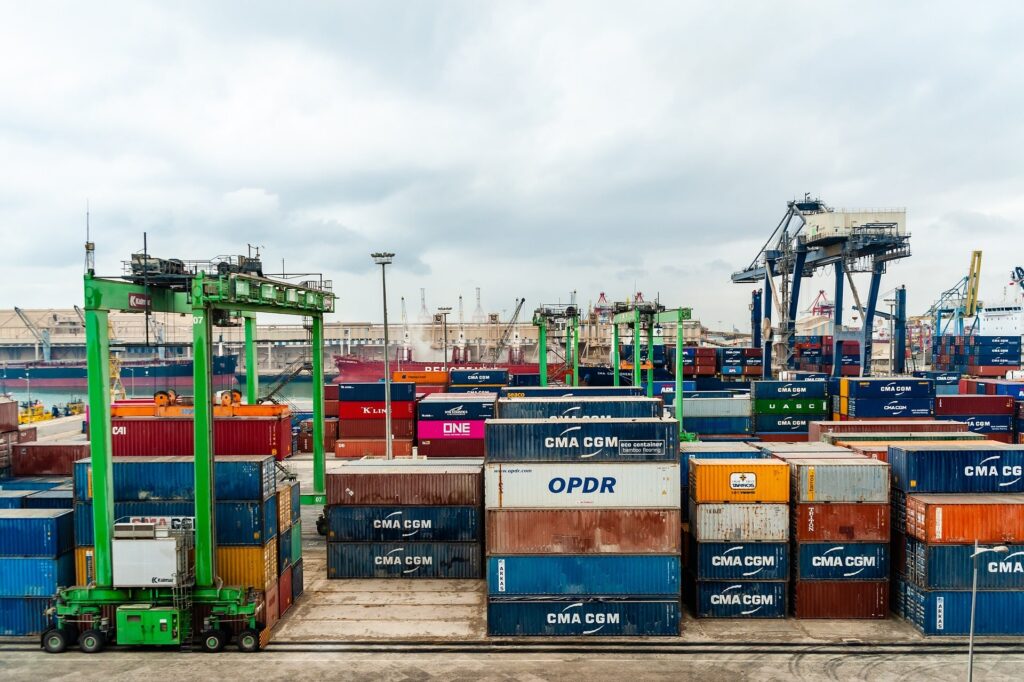물류 시스템의 비용 절감 방안 : 효율성과 혁신을 통한 최적화 전략
물류 산업은 글로벌 경제에서 중요한 역할을 하며, 기업 운영의 핵심 요소 중 하나다. 하지만 물류 비용 상승은 기업의 수익성을 위협하는 주요 요인으로 작용하고 있다. 이에 따라 기업들은 물류 시스템의 비용을 절감하기 위해 다양한 전략을 모색하고 있으며, 효율적인 물류 운영이 경쟁력 확보의 필수 요소로 자리 잡고 있다. 본 기사에서는 물류 비용 절감을 위한 핵심 전략과 최신 기술을 활용한 최적화 방안을 살펴본다.

1. 디지털화와 자동화를 통한 효율성 증대
1.1 물류 관리 시스템(WMS) 및 운송 관리 시스템(TMS) 도입 물류 관리 시스템(WMS)과 운송 관리 시스템(TMS)은 물류 운영을 최적화하고 비용을 절감하는 핵심 기술이다. 이 시스템들은 실시간 데이터 분석을 통해 창고 운영과 배송 프로세스를 최적화하며, 불필요한 비용을 줄이는 데 도움을 준다.
1.2 AI 및 머신러닝 활용 AI 및 머신러닝 기술을 활용하면 수요 예측이 가능해져 재고 관리의 효율성을 높일 수 있다. 이를 통해 불필요한 재고를 줄이고, 수요 변동에 따른 신속한 대응이 가능해진다. 또한, AI 기반 최적 경로 분석은 연료비 절감과 운송 시간 단축에 기여할 수 있다.
1.3 로봇 및 자동화 창고 도입 자동화 창고와 로봇 도입은 인건비 절감과 물류 속도 향상에 기여한다. 예를 들어, 아마존의 Kiva 로봇 시스템은 창고 내 상품 이동을 자동화하여 생산성을 높이고 비용을 절감하는 대표적인 사례다.
2. 공급망 최적화 및 협력 강화
2.1 공급망 가시성 확보 실시간 데이터 공유와 추적 시스템을 활용하면 공급망의 투명성을 높이고, 불필요한 지연을 방지할 수 있다. 블록체인 기술을 적용하면 공급망 전체의 가시성을 높이고, 중간 과정에서 발생하는 비용을 줄일 수 있다.
2.2 공동 물류 및 협력 모델 도입 기업 간 공동 물류를 도입하면 물류비를 절감할 수 있다. 예를 들어, 동일한 지역으로 배송되는 상품을 여러 기업이 공동 배송하면 물류 비용이 절감되고, 환경에도 긍정적인 영향을 미친다.
3. 운송 비용 절감 전략
3.1 최적화된 배송 경로 설정 GPS 및 AI 기반 경로 최적화 시스템을 도입하면 연료비를 절감하고 배송 시간을 단축할 수 있다. 실시간 교통 정보와 날씨 데이터를 활용하면 더욱 효과적인 배송 계획을 수립할 수 있다.
3.2 친환경 운송 수단 도입 전기 트럭, 수소차, 자율주행 차량 등의 친환경 운송 수단 도입은 장기적으로 연료비 절감과 유지보수 비용 절감에 기여할 수 있다. 또한, 탄소 배출 저감을 통해 친환경 규제를 준수할 수 있다.
3.3 적재율 극대화 및 공간 활용 최적화 운송 차량의 적재율을 높이면 단위 운송비를 줄일 수 있다. 스마트 적재 솔루션을 활용하면 물류 공간을 최적화하여 운송 횟수를 줄이고 비용을 절감할 수 있다.
4. 지속 가능한 물류 운영 전략
4.1 리버스 물류 활용 반품, 재활용, 재사용을 위한 리버스 물류를 도입하면 비용을 절감하고 환경 보호에도 기여할 수 있다. 이를 통해 제품의 수명 주기를 연장하고, 불필요한 폐기 비용을 줄일 수 있다.
4.2 지속 가능한 패키징 도입 친환경 포장재와 최소한의 포장 기술을 활용하면 포장 비용과 폐기물 처리 비용을 절감할 수 있다. 이는 기업의 ESG(환경·사회·거버넌스) 경영에도 긍정적인 영향을 미친다.
물류 시스템의 비용 절감은 단순한 비용 삭감이 아니라, 효율성과 혁신을 통한 최적화를 의미한다. 디지털 기술의 적극적인 활용, 공급망 최적화, 운송 전략 개선, 지속 가능한 운영 방안을 종합적으로 고려해야 한다. 이를 통해 기업들은 경쟁력을 강화하고, 동시에 지속 가능한 성장 기반을 구축할 수 있을 것이다.

Cost Reduction Strategies in Logistics Systems: Optimization Through Efficiency and Innovation
Introduction
The logistics industry plays a crucial role in the global economy and is a key component of business operations. However, rising logistics costs pose a major threat to company profitability. Consequently, businesses are exploring various strategies to reduce logistics expenses, making efficient logistics operations an essential element of competitiveness. This article examines key strategies for cost reduction in logistics and explores optimization approaches leveraging the latest technologies.
1. Enhancing Efficiency Through Digitalization and Automation
1.1 Adoption of Warehouse Management Systems (WMS) and Transportation Management Systems (TMS) Warehouse Management Systems (WMS) and Transportation Management Systems (TMS) are key technologies for optimizing logistics operations and reducing costs. These systems utilize real-time data analysis to optimize warehouse operations and delivery processes, thereby eliminating unnecessary expenses.
1.2 Use of AI and Machine Learning AI and machine learning technologies enable demand forecasting, enhancing inventory management efficiency. By minimizing excess stock and responding swiftly to demand fluctuations, companies can reduce unnecessary costs. Additionally, AI-powered route optimization can help cut fuel expenses and shorten transportation times.
1.3 Implementation of Robotics and Automated Warehouses The adoption of automated warehouses and robotics reduces labor costs while improving logistics speed. For instance, Amazon’s Kiva robot system automates warehouse item movement, significantly enhancing productivity and cutting costs.
2. Supply Chain Optimization and Collaboration
2.1 Ensuring Supply Chain Visibility Utilizing real-time data sharing and tracking systems improves supply chain transparency and prevents unnecessary delays. The application of blockchain technology enhances visibility across the supply chain and reduces intermediate costs.
2.2 Introduction of Collaborative Logistics Models Implementing joint logistics operations among companies helps reduce logistics costs. For example, consolidating deliveries for multiple businesses in the same region can lower transportation expenses while benefiting the environment.
3. Strategies for Reducing Transportation Costs
3.1 Optimizing Delivery Routes Incorporating GPS and AI-based route optimization systems helps minimize fuel costs and reduce delivery times. Leveraging real-time traffic data and weather forecasts further enhances delivery planning.
3.2 Adoption of Eco-Friendly Transportation Methods Using electric trucks, hydrogen-powered vehicles, and autonomous vehicles can lead to long-term fuel and maintenance cost reductions. Additionally, lowering carbon emissions helps companies comply with environmental regulations.
3.3 Maximizing Load Efficiency and Space Utilization Increasing the load efficiency of transport vehicles reduces per-unit transportation costs. Smart loading solutions optimize logistics space, decreasing transport frequency and expenses.
4. Sustainable Logistics Operations
4.1 Implementation of Reverse Logistics Reverse logistics, which includes returns, recycling, and reuse, contributes to cost savings and environmental protection. Extending product life cycles and reducing disposal expenses benefit both businesses and the environment.
4.2 Adoption of Sustainable Packaging Using eco-friendly packaging materials and minimizing packaging waste can lower packaging and disposal costs. This strategy also positively impacts corporate ESG (Environmental, Social, and Governance) initiatives.
Conclusion
Reducing logistics costs is not merely about cutting expenses but rather optimizing operations through efficiency and innovation. Businesses must actively leverage digital technologies, optimize supply chains, improve transportation strategies, and implement sustainable operational practices. By doing so, they can enhance their competitiveness while building a foundation for sustainable growth.






